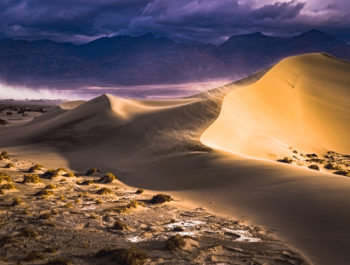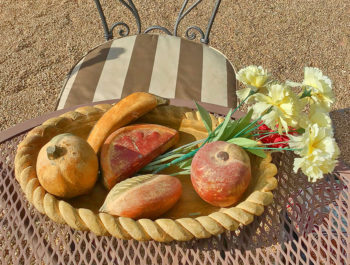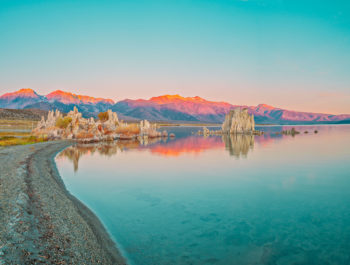Creating Artistic Landscape Photographs Tripods Part 2
An amateur is someone who does a job for the love of it rather than for money.
A true amateur is a part time professional.
David Pye, Art and Workmanship, page 136
Preface
The stories featured in Part 1 of this series of two essays about tripods are a jumping off point for additional remarks about tripods. One aspect of using a tripod I find interesting is the belief that using a tripod makes you a professional, a committed amateur or as David Pye puts it ‘a part time professional.’ The logic, or lack of, behind this is simple: hold a camera in your hands at eye level and you are an amateur. Put the same camera on a tripod and you are a professional or a committed amateur.
The Who And The What
Is a tripod an end in itself or the means to an end? Is using a tripod about saying ‘I am a serious photographer’ or is using a tripod about creating high quality photographs? In other words when I use a tripod am I concerned with how others perceive me or am I concerned with creating better images?
One could say I may be concerned with both: how I come across to others and how my photographs turn out. These photographs by the way may never be seen by the people who were present when I created them, leaving these onlookers with the belief that I am a serious photographer without having any physical evidence that I am able to create high quality images.
However saying that both statements are true is inaccurate because if I am immersed in the act of creating I am by definition blind to the presence of other people around me. This is because creativity calls for creating a spatial vacuum, a mental space, in which only the photograph I am in the act of creating is present in my consciousness. Mihaly Csikszentmihalyi calls it being in a state of Flow, a condition in which one is so absorbed in his work that everything else fades away. Time stops, ambient noises go unnoticed and, directly relevant to this discussion, people surrounding me are forgotten. When I work in the field the photograph I create is first an image in my mind, then a photograph on my ground glass or my viewfinder, then a capture on film or on a digital storage device, and eventually a print that I can share with my audience. In each stage of this process the best result is achieved if the only thing I am thinking of is the photograph. In other words I must be in a state of flow. Any consideration for, or intrusion by, a third party will negatively affect the outcome of my efforts.
If, on the other hand, I am concerned with how I come across to others I will be unable to create anything of value because I will not be immersed in the act of creation. Instead I will be immersed in the act of presenting myself as a ‘professional’ photographer. This endeavor will be the focus of my efforts and will consume all my attention. Creativity may be attempted but only as a pretense. I will pretend to be involved in a creative act not because I am but because it is part of the ‘professional photographer’ image I want to project onto whoever happens to be there. This is pretense because to be creative, to be in a state of Flow, I have to forget that other people are present and of course forgetting that people are present is the exact opposite of what I would be doing if I was intent on projecting a professional image through the use of a tripod. Therefore, regardless how tempting it may be to think I can be focused on both creating images and impressing others, I can only do one of these effectively, I must choose between the who and the what. To create quality images this choice has to be the what. The who will be expressed by my images not by my gear.
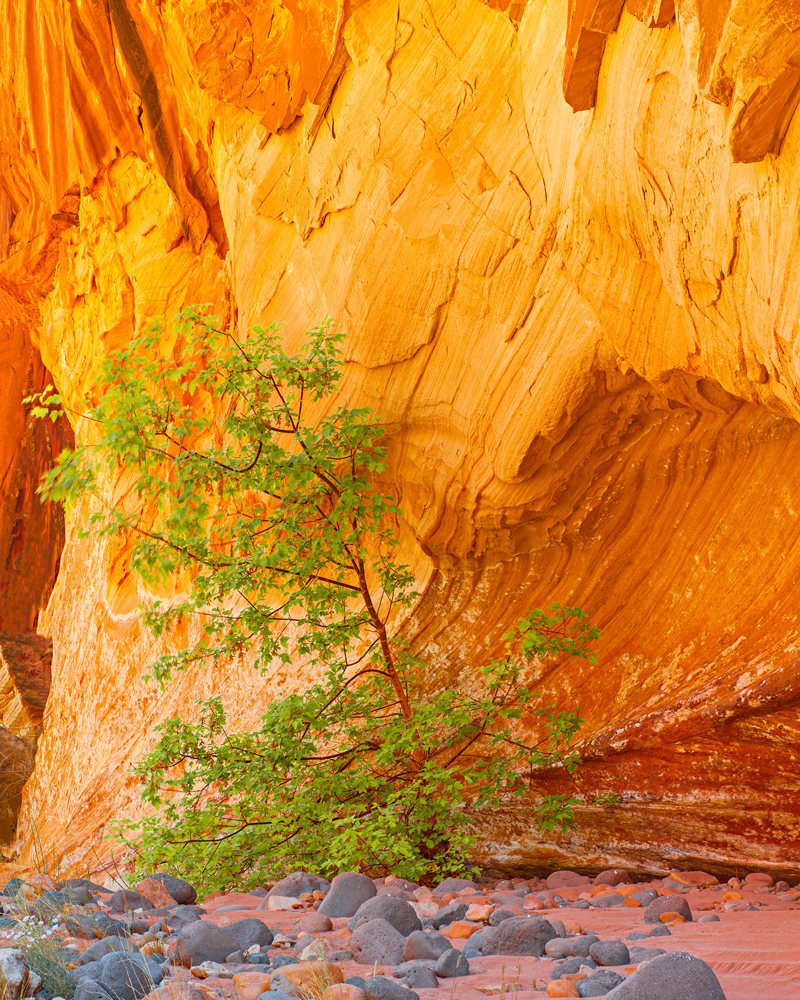
Signifier Or Tool?
To use a term borrowed from Semiology, the study of signs, is the tripod a signifier or is it a tool? In other words does the tripod signify that I am a committed photographer or is the tripod a tool used as part of my desire to create high quality images and to embrace a committed approach to photography?
If the tripod is a tool then it is only present because it is indispensable. The minute technology renders it obsolete it will disappear from my toolkit. No longer needed it will go away the way Daguerreotyping equipment went away once a faster image capture technology became available.
However if it is a signifier then it must be present always, regardless of technological changes, because the professional image it gives to onlookers depends on it. If it signifies professionalism and it disappears the image of professionalism it generates disappears with it. If the tripod is a signifier I need it not because of what it can do for my photography but because of the way people perceive me when I use it.
Letting Go
In my previous essay I talked about how digital cameras no longer require a tripod. For those of us who have used a tripod since we started photography, like myself, there is a letting go aspect to this. Change is difficult and getting rid of a tool that was so far indispensable is not easy. Using a tripod is a habit. It may not be necessary anymore but I may still want to continue using one because I have always done so.
Deciding to no longer use a tripod is part of letting go, part of accepting reality. Using a tripod to create high quality images was necessary when cameras were heavy and cumbersome, film was slow and high ISO meant massive amount of noise. Today’s technology has rendered all that obsolete. Modern cameras are light, lenses are sharp at full opening and high ISO no longer means high noise levels. The only reason to hang on to the belief I must use a tripod is because I cannot let it go.
Don’t get me wrong I enjoyed using a tripod. I enjoyed setting it up and not having to hold my camera. I enjoyed refining the composition until it was just the way I wanted it. I enjoyed being able to wait for the light standing next to the tripod watching colors change and shadows move then trip the shutter when everything was right.
I continue to enjoy using it when it is necessary to do so, when light conditions call for long time exposures or when I need to leave the camera in a given location for some time. However I also enjoy the freedom that not using a tripod brings. I enjoy being able to walk around the scene and find multiple compositions without having to re-adjust the height of the tripod. I enjoy being able to photograph in locations where setting a tripod was impossible, such as in deep water conditions or in extremely narrow places. I enjoy being able to capture images immediately instead of having to wait until my tripod was setup. I remember several occasions in which the time it took to set up my tripod caused me to lose the shot because by the time I was ready to photograph the light was gone…
Change is hard but there is an upside to it: freeing myself from using a tripod means being able to create images that I could not create with a tripod. Here as in many other aspects of art letting go frees me from a constraint, from something I believe I should do even though current technology makes it unnecessary. It releases me from what is holding me back, from what is preventing me from moving on, from achieving my full potential. It releases me from doing what I believe I should to do to be successful and instead makes me do what I need to do to be successful. It leads me to the creation of new and different photographs.
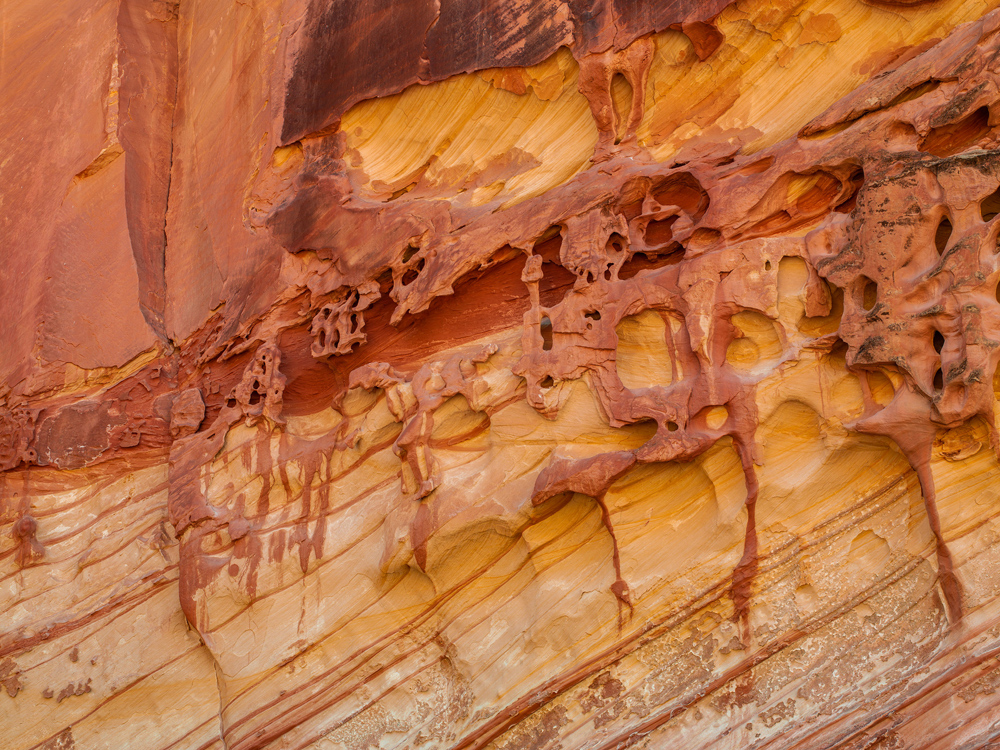
Tips
At the end this series of two essays I want to include tips focused on why to use, or not use, a tripod.
– Success as a landscape photographer depends on being adaptable. Natalie and I had to adapt to dramatic changes since we started selling fine art photographs in 1995. We have been successful because we were able to adapt to these changes in a positive manner. Going from tripods being a necessity to tripods being an option is one of these changes.
– Shooting handheld is now easy and if done right results in professional quality images. This is a huge positive aspect. Current cameras are lightweight and have very low noise levels at high ISO settings. Wide angles do not need small aperture settings to get things sharp throughout the field of view. Lightroom has superb noise removal algorithms if you need to remove whatever ISO noise may be in your images.
– Learning advanced handheld shooting and processing practices will go a long ways towards solving what at first may appear to be a problem to an untrained photographer.
– What matters is being ourselves and creating images that are ours, not being what we believe other people want us to be or creating images similar to what other photographers created before us.
Conclusion
We have come to the end of an era. Today a tripod is no longer an essential tool for serious landscape photographers. It no longer stands for being committed to the creation of quality images. We used to say and it is was true, ‘save your money and buy a good tripod now because you will have to buy one eventually. Now we can say, and it is also true ‘save your money and do not buy a tripod.’
We have less to do and we can photograph faster than ever. Not long ago we set up the tripod and attached the camera to it. Now we just raise the camera to our eye. Taking photographs is simpler, faster and accessible to anyone.
But if so where is the new signifier, the new element that indicates a committed approach to photography? What stands for being serious and dedicated to the art of landscape photography? What stands for the desire to achieve mastery?
What it means to be committed to the art and the craft of landscape photography is changing. In this essay we saw that not using a tripod no longer means being an amateur. However tripods are only one of the things that affect how commitment is demonstrated. There are many others. Reflecting on what those are is the subject of my next essay: Committed. Stay tuned!
About Alain Briot
I create fine art photographs, teach workshops with Natalie and offer Mastery Tutorials on composition, image conversion, optimization, printing, business and marketing. I am the author of Mastering Landscape Photography, Mastering Photographic Composition, Creativity and Personal Style, Marketing Fine Art Photography and How Photographs are Sold. All 4 books are available in eBook format on our website at this LINK. Free samplers are available so you can see the quality of these books for yourself.
You can find more information about our workshops, photographs, writings and tutorials as well as subscribe to our Free Monthly Newsletter on our website. You will receive 40 free eBooks when you subscribe to my newsletter.

Studying Fine Art Photography With Alain and Natalie Briot
If you enjoyed this essay you will enjoy attending a workshop with us. I lead workshops with my wife Natalie to the most photogenic locations in the US Southwest. Our workshops focus on the artistic aspects of photography. While we do teach technique, we do so for the purpose of creating artistic photographs. Our goal is to help you create photographs that you will be proud of and that will be unique to you. The locations we photograph include Navajoland, Antelope Canyon, Monument Valley, Zion, the Grand Canyon and many others. Our workshops listing is available at this LINK.
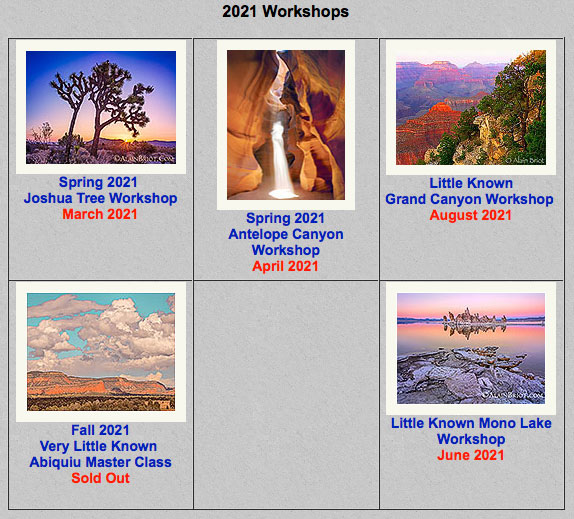
Alain Briot
November 2020
Glendale, Arizona
Author of Mastering Landscape Photography,Mastering Composition, Creativity and Personal Style, Marketing Fine Art Photography, and How Photographs are Sold. http://www.beautiful-landscape.com [email protected]






